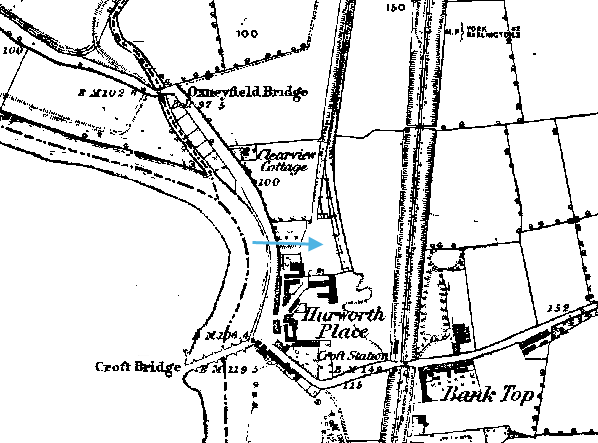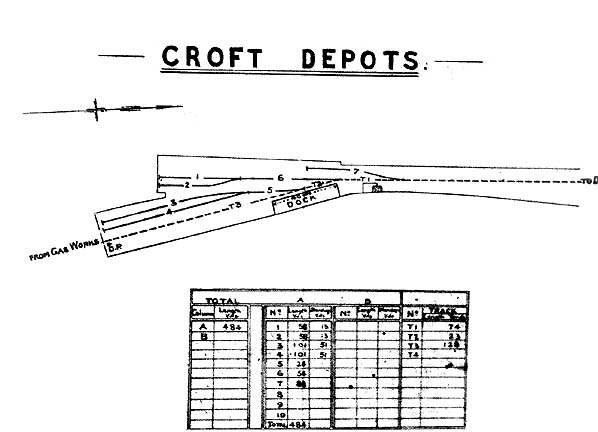Notes: The Stockton & Darlington Railway was the first railway in the world to operate a freight and passenger service with steam traction. In 1821 George Stephenson, who had built several steam engines to work in the Killingworth colliery, heard of Edward Pease’s intention of building an 8-mile line from Stockton on the coast to Darlington to exploit a rich vein of coal. Pease intended to use horse traction but Stephenson explained that a steam engine could pull 50 times the load that horses could draw on iron rails. Impressed with Stephenson's claims, Pease agreed to let Stephenson supply steam locomotives for his line.
The first engine ran from Darlington to Stockton On 27th September 1825, preceded by a man on horse carrying a flag reading Periculum privatum utilitas publica ('The private danger is the public good'). When the horseman was out of the way, Stephenson opened the throttle and pulled his train of wagons carrying 450 persons at a speed of 15 miles per hour.
With the success of the line, the Stockton & Darlingston began opening branch lines in an effort to
make itself financially stable. The first, to Yarm, opened on 11th October 1825, allowing horses to
pull coal from Allens West into the Hole of Paradise at the top of Yarm Bank. The second, the Black Boy branch, opened on 10th July 1827 connecting the collieries of the Dene Valley to Shildon and the rest of the line.
The third was the Croft branch, which opened on 27th October 1829 with a ceremonial cold buffet at the Croft Spa Hotel. The Croft branch was built to allow the railway to bring coal from the main line at Albert Hill to Croft, where it was loaded on to pack-horses to carry it into North Yorkshire. Croft was also the railhead for the Swaledale lead mines.
A passenger service was opened at the end of September 1833 but was not a success and on 13th September 1833 a decision was made to discontinue it although the actuasl date of closure is unknown. The line reopened to passengers on 1st February 1837 when William Walton was given a year's contract to run the service. In October 1835 Edward Pease's son Joseph proposed a new line between York and Newcastle with the intention of eventually extending the line to London which would open up new markets for the coal that was already being carried by the Stockton & Darlington.
With local support forthcoming, Pease was keen to open the line as quickly as possible and a start was made on surveying the northern section bwtween the Tyne and Croft on 2nd November 1835. The northern section was authorised by Parliament on 4th July 1836 and on that day the Great North of England Railway was incorporated to run the line; work started near Croft on 25th November 1837. the southern section of the line was authorised on 30th June 1837 but at a meeting held on 14th August 1837 a decision was made to stop work on the northern section and to proceed only with the southern section in order to join up with a line between York and the south that was already under construction.
In March 1839 the company agreed to buy the Croft branch from the Stockton & Darlington for £20,000 although the GNER only used about half of the three mile branch for the course of its new line, the southern end of the line from Parkgate Junction being retained for coal traffic. Lead traffic was lost when a new railhead was established at Cowton on the GNER.
The line was due to open on 25th November 1840 but work was not completed on time with the line eventually opening on 4th January 1841. A new station at Croft was opened on 31st March 1841 replacing the original S & D terminus which remained in use as a goods depot.
Croft Depot also served a tar distillery until the late 1950's, the depot closed on 27th April 1964 and the site has now been redeveloped for housing although north of the depot site a public footpath follows the course of the Croft branch.
Source: Railway Magazine - October 1961, The Great North of England Railway by Ken Hoole
See also Croft Spa
|

depot1.jpg)


depot2.jpg)
depot4.jpg)
depot5.jpg)

depot_thumb2.jpg)
depot_thumb3.jpg)

 Home Page
Home Page